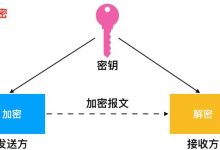# neural network(神经网络)import matplotlib.pyplot as pltimport numpy as npimport scipy.io as sioimport matplotlibimport scipy.optimize as optfrom sklearn.metrics import classification_report#这个包是评价报告
def load_data(path, transpose=True):data = sio.loadmat(path)y = data.get(\'y\') # (5000,1)y = y.reshape(y.shape[0]) # make it back to column vectorX = data.get(\'X\') # (5000,400)if transpose:# for this dataset, you need a transpose to get the orientation rightX = np.array([im.reshape((20, 20)).T for im in X])# and I flat the image again to preserve the vector presentationX = np.array([im.reshape(400) for im in X])return X, y
X, y = load_data(\'ex3data1.mat\')print(X.shape)print(y.shape)
def plot_an_image(image):# \"\"\"# image : (400,)# \"\"\"fig, ax = plt.subplots(figsize=(1, 1))ax.matshow(image.reshape((20, 20)), cmap=matplotlib.cm.binary)plt.xticks(np.array([])) # just get rid of ticksplt.yticks(np.array([]))
#绘图函数pick_one = np.random.randint(0, 5000)plot_an_image(X[pick_one, :])plt.show()print(\'this should be {}\'.format(y[pick_one]))
def plot_100_image(X):\"\"\" sample 100 image and show themassume the image is squareX : (5000, 400)\"\"\"size = int(np.sqrt(X.shape[1]))# sample 100 image, reshape, reorg itsample_idx = np.random.choice(np.arange(X.shape[0]), 100) # 100*400sample_images = X[sample_idx, :]fig, ax_array = plt.subplots(nrows=10, ncols=10, sharey=True, sharex=True, figsize=(8, 8))for r in range(10):for c in range(10):ax_array[r, c].matshow(sample_images[10 * r + c].reshape((size, size)),cmap=matplotlib.cm.binary)plt.xticks(np.array([]))plt.yticks(np.array([]))#绘图函数,画100张图片plot_100_image(X)plt.show()
raw_X, raw_y = load_data(\'ex3data1.mat\')print(raw_X.shape)print(raw_y.shape)
# 准备数据# add intercept=1 for x0X = np.insert(raw_X, 0, values=np.ones(raw_X.shape[0]), axis=1)#插入了第一列(全部为1)X.shape
# y have 10 categories here. 1..10, they represent digit 0 as category 10 because matlab index start at 1# I\'ll ditit 0, index 0 againy_matrix = []for k in range(1, 11):y_matrix.append((raw_y == k).astype(int)) # 见配图 \"向量化标签.png\"# last one is k==10, it\'s digit 0, bring it to the first position,最后一列k=10,都是0,把最后一列放到第一列y_matrix = [y_matrix[-1]] + y_matrix[:-1]y = np.array(y_matrix)y.shape# 扩展 5000*1 到 5000*10# 比如 y=10 -> [0, 0, 0, 0, 0, 0, 0, 0, 0, 1]: ndarray# \"\"\"y
# train 1 model(训练一维模型)def cost(theta, X, y):\'\'\' cost fn is -l(theta) for you to minimize\'\'\'return np.mean(-y * np.log(sigmoid(X @ theta)) - (1 - y) * np.log(1 - sigmoid(X @ theta)))
def regularized_cost(theta, X, y, l=1):\'\'\'you don\'t penalize theta_0\'\'\'theta_j1_to_n = theta[1:]regularized_term = (l / (2 * len(X))) * np.power(theta_j1_to_n, 2).sum()return cost(theta, X, y) + regularized_term
def regularized_gradient(theta, X, y, l=1):\'\'\'still, leave theta_0 alone\'\'\'theta_j1_to_n = theta[1:]regularized_theta = (l / len(X)) * theta_j1_to_n# by doing this, no offset is on theta_0regularized_term = np.concatenate([np.array([0]), regularized_theta])return gradient(theta, X, y) + regularized_term
def sigmoid(z):return 1 / (1 + np.exp(-z))def gradient(theta, X, y):\'\'\'just 1 batch gradient\'\'\'return (1 / len(X)) * X.T @ (sigmoid(X @ theta) - y)def logistic_regression(X, y, l=1):\"\"\"generalized logistic regressionargs:X: feature matrix, (m, n+1) # with incercept x0=1y: target vector, (m, )l: lambda constant for regularizationreturn: trained parameters\"\"\"# init thetatheta = np.zeros(X.shape[1])# train itres = opt.minimize(fun=regularized_cost,x0=theta,args=(X, y, l),method=\'TNC\',jac=regularized_gradient,options={\'disp\': True})# get trained parametersfinal_theta = res.xreturn final_theta
def predict(x, theta):prob = sigmoid(x @ theta)return (prob >= 0.5).astype(int)t0 = logistic_regression(X, y[0])print(t0.shape)y_pred = predict(X, t0)print(\'Accuracy={}\'.format(np.mean(y[0] == y_pred)))
# train k model(训练k维模型)k_theta = np.array([logistic_regression(X, y[k]) for k in range(10)])print(k_theta.shape)\'\'\'# 进行预测* think about the shape of k_theta, now you are making $X\\times\\theta^T$> $(5000, 401) \\times (10, 401).T = (5000, 10)$* after that, you run sigmoid to get probabilities and for each row, you find the highest prob as the answer\'\'\'
prob_matrix = sigmoid(X @ k_theta.T)np.set_printoptions(suppress=True)prob_matrix
y_pred = np.argmax(prob_matrix, axis=1)#返回沿轴axis最大值的索引,axis=1代表行y_pred
y_answer = raw_y.copy()y_answer[y_answer==10] = 0print(classification_report(y_answer, y_pred))
# 神经网络模型图示\'\'\'<img style=\"float: left;\" src=\"../img/nn_model.png\">\'\'\'
def load_weight(path):data = sio.loadmat(path)return data[\'Theta1\'], data[\'Theta2\']theta1, theta2 = load_weight(\'ex3weights.mat\')theta1.shape, theta2.shape
#因此在数据加载函数中,原始数据做了转置,然而,转置的数据与给定的参数不兼容,因为这些参数是由原始数据训练的。 所以为了应用给定的参数,我需要使用原始数据(不转置)X, y = load_data(\'ex3data1.mat\',transpose=False)X = np.insert(X, 0, values=np.ones(X.shape[0]), axis=1) # interceptX.shape, y.shape
# feed forward prediction(前馈预测)a1 = Xz2 = a1 @ theta1.T # (5000, 401) @ (25,401).T = (5000, 25)z2.shape
z2 = np.insert(z2, 0, values=np.ones(z2.shape[0]), axis=1)a2 = sigmoid(z2)a2.shapez3 = a2 @ theta2.Tz3.shape
a3 = sigmoid(z3)a3
y_pred = np.argmax(a3, axis=1) + 1 # numpy is 0 base index, +1 for matlab convention,返回沿轴axis最大值的索引,axis=1代表行y_pred.shape
 爱站程序员基地
爱站程序员基地


